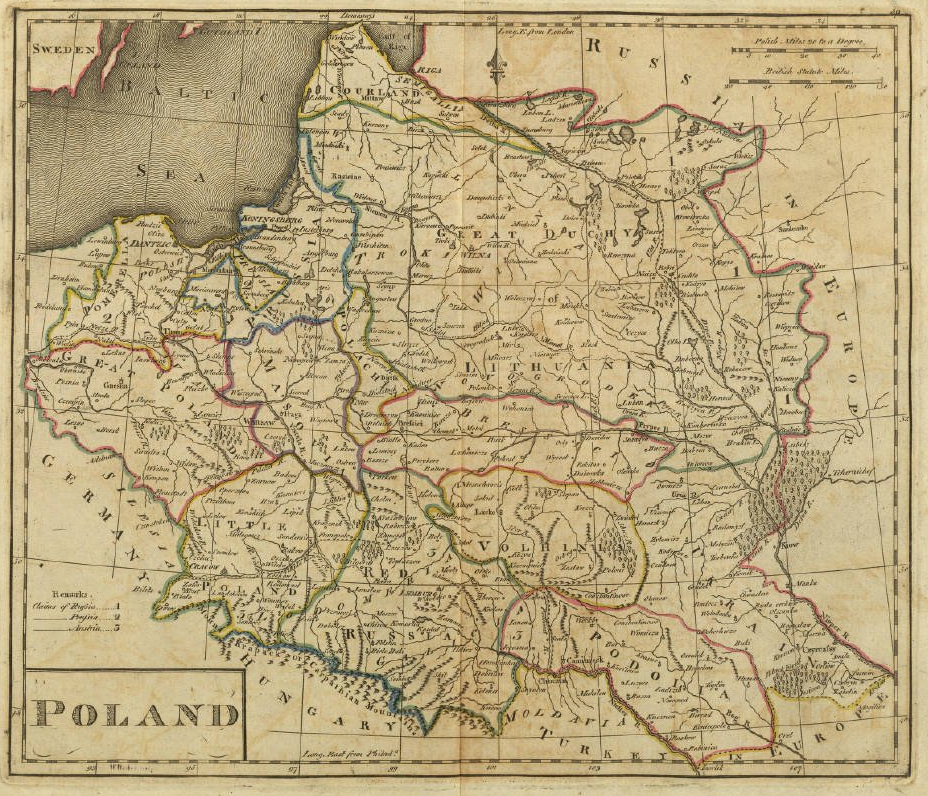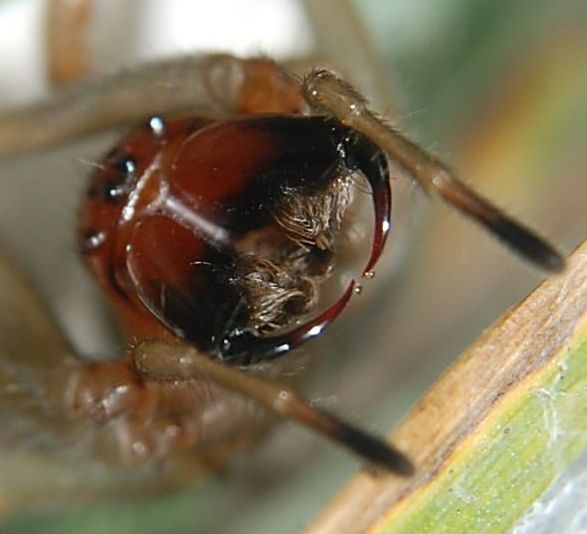|
Lechia Squamata
''Lechia squamata'', synonym ''Laufeia squamata'', is a species of spider of the family Salticidae (jumping spiders). It is found in China and Vietnam. It was formerly the only species in the genus ''Lechia'' and was originally described in 1985 by Marek Zabka from a single female, which was beaten from bushes in Vietnam. Description The carapace is orange to brown with a broad yellow band near the margin. The areas around the eyes are black, except for the front median eyes, where it is brown-black. The opisthosoma The opisthosoma is the posterior part of the body in some arthropods, behind the prosoma (cephalothorax). It is a distinctive feature of the subphylum Chelicerata (arachnids, horseshoe crabs and others). Although it is similar in most respects to a ... is yellowish with many grey spots. The legs are yellow with grey. References External links * Salticidae.orgDiagnostic drawings Salticidae Spiders of Asia Spiders described in 1985 Taxa named by Marek Michal ... [...More Info...] [...Related Items...] OR: [Wikipedia] [Google] [Baidu] |
Marek Michał Żabka
Marek Michał Żabka (born 1955) is a Polish arachnologist. His main research area is the spider family Salticidae (jumping spiders), especially their systematics and biogeography. He has produced nearly 80 scientific publications, popular science articles and a book. The World Spider Catalog lists 25 genus names or synonyms and 237 species names or synonyms of which he is either the sole author or a co-author. Nine jumping spider species and one ant spider species have been given the specific name ''zabkai''. He received a master's degree in biology in 1978 from the Higher School of Agriculture and Pedagogy (Wyższa Szkoła Rolniczo-Pedagogiczna) in Siedlce – now the Siedlce University of Natural Sciences and Humanities. He then worked there, first as an assistant and then as adjunct professor. In 1984, he was awarded a PhD in biological sciences by the Department of Earth Sciences and Biology at the Adam Mickiewicz University in Poznań under the supervision of Jerzy Prósz ... [...More Info...] [...Related Items...] OR: [Wikipedia] [Google] [Baidu] |
Synonym (taxonomy)
The Botanical and Zoological Codes of nomenclature treat the concept of synonymy differently. * In botanical nomenclature, a synonym is a scientific name that applies to a taxon that (now) goes by a different scientific name. For example, Linnaeus was the first to give a scientific name (under the currently used system of scientific nomenclature) to the Norway spruce, which he called ''Pinus abies''. This name is no longer in use, so it is now a synonym of the current scientific name, '' Picea abies''. * In zoology, moving a species from one genus to another results in a different binomen, but the name is considered an alternative combination rather than a synonym. The concept of synonymy in zoology is reserved for two names at the same rank that refers to a taxon at that rank - for example, the name ''Papilio prorsa'' Linnaeus, 1758 is a junior synonym of ''Papilio levana'' Linnaeus, 1758, being names for different seasonal forms of the species now referred to as ''Araschnia l ... [...More Info...] [...Related Items...] OR: [Wikipedia] [Google] [Baidu] |
Spider
Spiders (order Araneae) are air-breathing arthropods that have eight legs, chelicerae with fangs generally able to inject venom, and spinnerets that extrude silk. They are the largest order of arachnids and rank seventh in total species diversity among all orders of organisms. Spiders are found worldwide on every continent except for Antarctica, and have become established in nearly every land habitat. , 50,356 spider species in 132 families have been recorded by taxonomists. However, there has been debate among scientists about how families should be classified, with over 20 different classifications proposed since 1900. Anatomically, spiders (as with all arachnids) differ from other arthropods in that the usual body segments are fused into two tagmata, the cephalothorax or prosoma, and the opisthosoma, or abdomen, and joined by a small, cylindrical pedicel, however, as there is currently neither paleontological nor embryological evidence that spiders ever had a sep ... [...More Info...] [...Related Items...] OR: [Wikipedia] [Google] [Baidu] |
Salticidae
Jumping spiders are a group of spiders that constitute the family Salticidae. As of 2019, this family contained over 600 described genera and over 6,000 described species, making it the largest family of spiders at 13% of all species. Jumping spiders have some of the best vision among arthropods and use it in courtship, hunting, and navigation. Although they normally move unobtrusively and fairly slowly, most species are capable of very agile jumps, notably when hunting, but sometimes in response to sudden threats or crossing long gaps. Both their book lungs and tracheal system are well-developed, and they use both systems (bimodal breathing). Jumping spiders are generally recognized by their eye pattern. All jumping spiders have four pairs of eyes, with the anterior median pair being particularly large. Distinguishing characteristics Jumping spiders are among the easiest to distinguish from similar spider families because of the shape of the cephalothorax and their eye patt ... [...More Info...] [...Related Items...] OR: [Wikipedia] [Google] [Baidu] |
China
China, officially the People's Republic of China (PRC), is a country in East Asia. It is the world's List of countries and dependencies by population, most populous country, with a Population of China, population exceeding 1.4 billion, slightly ahead of India. China spans the equivalent of five time zones and Borders of China, borders fourteen countries by land, the List of countries and territories by land borders, most of any country in the world, tied with Russia. Covering an area of approximately , it is the world's third List of countries and dependencies by area, largest country by total land area. The country consists of 22 provinces of China, provinces, five autonomous regions of China, autonomous regions, four direct-administered municipalities of China, municipalities, and two special administrative regions of China, Special Administrative Regions (Hong Kong and Macau). The national capital is Beijing, and the List of cities in China by population, most populous cit ... [...More Info...] [...Related Items...] OR: [Wikipedia] [Google] [Baidu] |
Vietnam
Vietnam or Viet Nam ( vi, Việt Nam, ), officially the Socialist Republic of Vietnam,., group="n" is a country in Southeast Asia, at the eastern edge of mainland Southeast Asia, with an area of and population of 96 million, making it the world's sixteenth-most populous country. Vietnam borders China to the north, and Laos and Cambodia to the west. It shares maritime borders with Thailand through the Gulf of Thailand, and the Philippines, Indonesia, and Malaysia through the South China Sea. Its capital is Hanoi and its largest city is Ho Chi Minh City (commonly known as Saigon). Vietnam was inhabited by the Paleolithic age, with states established in the first millennium BC on the Red River Delta in modern-day northern Vietnam. The Han dynasty annexed Northern and Central Vietnam under Chinese rule from 111 BC, until the first dynasty emerged in 939. Successive monarchical dynasties absorbed Chinese influences through Confucianism and Buddhism, and expanded ... [...More Info...] [...Related Items...] OR: [Wikipedia] [Google] [Baidu] |
Lechia
The ethnonyms for the Poles (people) and Poland (their country) include endonyms (the way Polish people refer to themselves and their country) and exonyms (the way other peoples refer to the Poles and their country). Endonyms and most exonyms for Poles and Poland derive from the name of the West Slavic tribe of Polans (''Polanie''), while in some languages the exonyms for Poland to derive from the name of another tribe – the Lendians (''Lędzianie''). Endonyms The Polish words for a Pole are ''Polak'' (masculine) and ''Polka'' (feminine), ''Polki'' being the plural form for two or more women and ''Polacy'' being the plural form for the rest. The adjective "Polish" translates to Polish as ''polski'' (masculine), ''polska'' (feminine) and ''polskie'' (neuter). The common Polish name for Poland is ''Polska''. The latter Polish word is an adjectival form which has developed into a substantive noun, most probably originating in the phrase ''polska ziemia'', meaning "Polish ... [...More Info...] [...Related Items...] OR: [Wikipedia] [Google] [Baidu] |
Opisthosoma
The opisthosoma is the posterior part of the body in some arthropods, behind the prosoma ( cephalothorax). It is a distinctive feature of the subphylum Chelicerata (arachnids, horseshoe crabs and others). Although it is similar in most respects to an abdomen (and is often referred to as such), the opisthosoma is differentiated by its inclusion of the respiratory organs ( book lungs or book gills) and the heart. Segments The number of segments and appendages on the opisthosoma vary. Scorpions have 13, but the first is only seen during its embryological development. Other arachnids have fewer; harvestmen, for instance, have only ten. In general, appendages are absent or reduced, although in horseshoe crabs they persist as large plate-like limbs, called opercula or branchiophores, bearing the book gills, and that function in locomotion and gas exchange. In most chelicerates the opisthosomal limbs are greatly reduced and persist only as specialized structures, such as the silk-p ... [...More Info...] [...Related Items...] OR: [Wikipedia] [Google] [Baidu] |
Spiders Of Asia
Spiders (order Araneae) are air-breathing arthropods that have eight legs, chelicerae with fangs generally able to inject venom, and spinnerets that extrude silk. They are the largest order of arachnids and rank seventh in total species diversity among all orders of organisms. Spiders are found worldwide on every continent except for Antarctica, and have become established in nearly every land habitat. , 50,356 spider species in 132 families have been recorded by taxonomists. However, there has been debate among scientists about how families should be classified, with over 20 different classifications proposed since 1900. Anatomically, spiders (as with all arachnids) differ from other arthropods in that the usual body segments are fused into two tagmata, the cephalothorax or prosoma, and the opisthosoma, or abdomen, and joined by a small, cylindrical pedicel, however, as there is currently neither paleontological nor embryological evidence that spiders ever had a separat ... [...More Info...] [...Related Items...] OR: [Wikipedia] [Google] [Baidu] |
Spiders Described In 1985
Spiders (order Araneae) are air-breathing arthropods that have eight legs, chelicerae with fangs generally able to inject venom, and spinnerets that extrude silk. They are the largest order of arachnids and rank seventh in total species diversity among all orders of organisms. Spiders are found worldwide on every continent except for Antarctica, and have become established in nearly every land habitat. , 50,356 spider species in 132 families have been recorded by taxonomists. However, there has been debate among scientists about how families should be classified, with over 20 different classifications proposed since 1900. Anatomically, spiders (as with all arachnids) differ from other arthropods in that the usual body segments are fused into two tagmata, the cephalothorax or prosoma, and the opisthosoma, or abdomen, and joined by a small, cylindrical pedicel, however, as there is currently neither paleontological nor embryological evidence that spiders ever had a ... [...More Info...] [...Related Items...] OR: [Wikipedia] [Google] [Baidu] |




